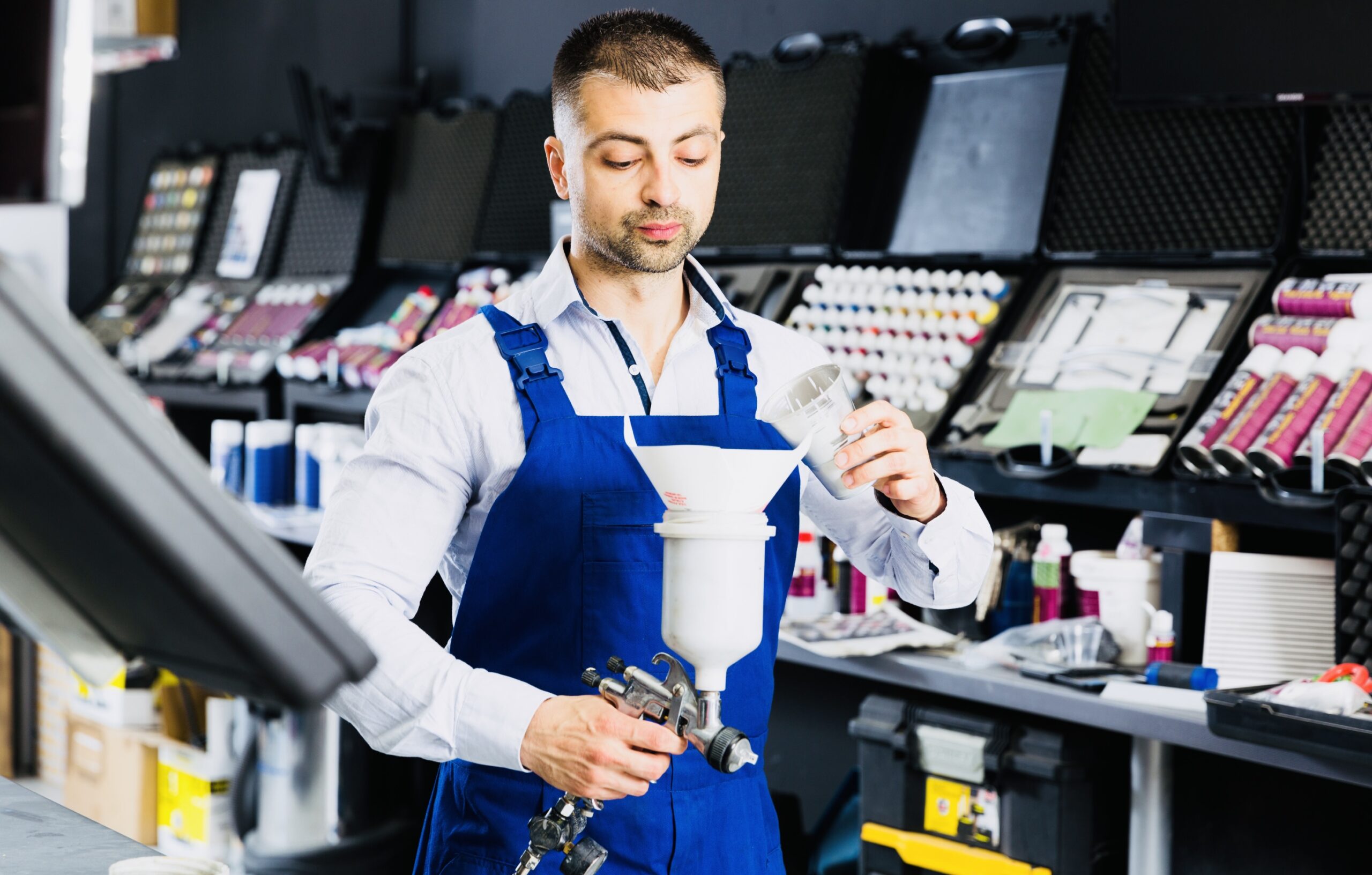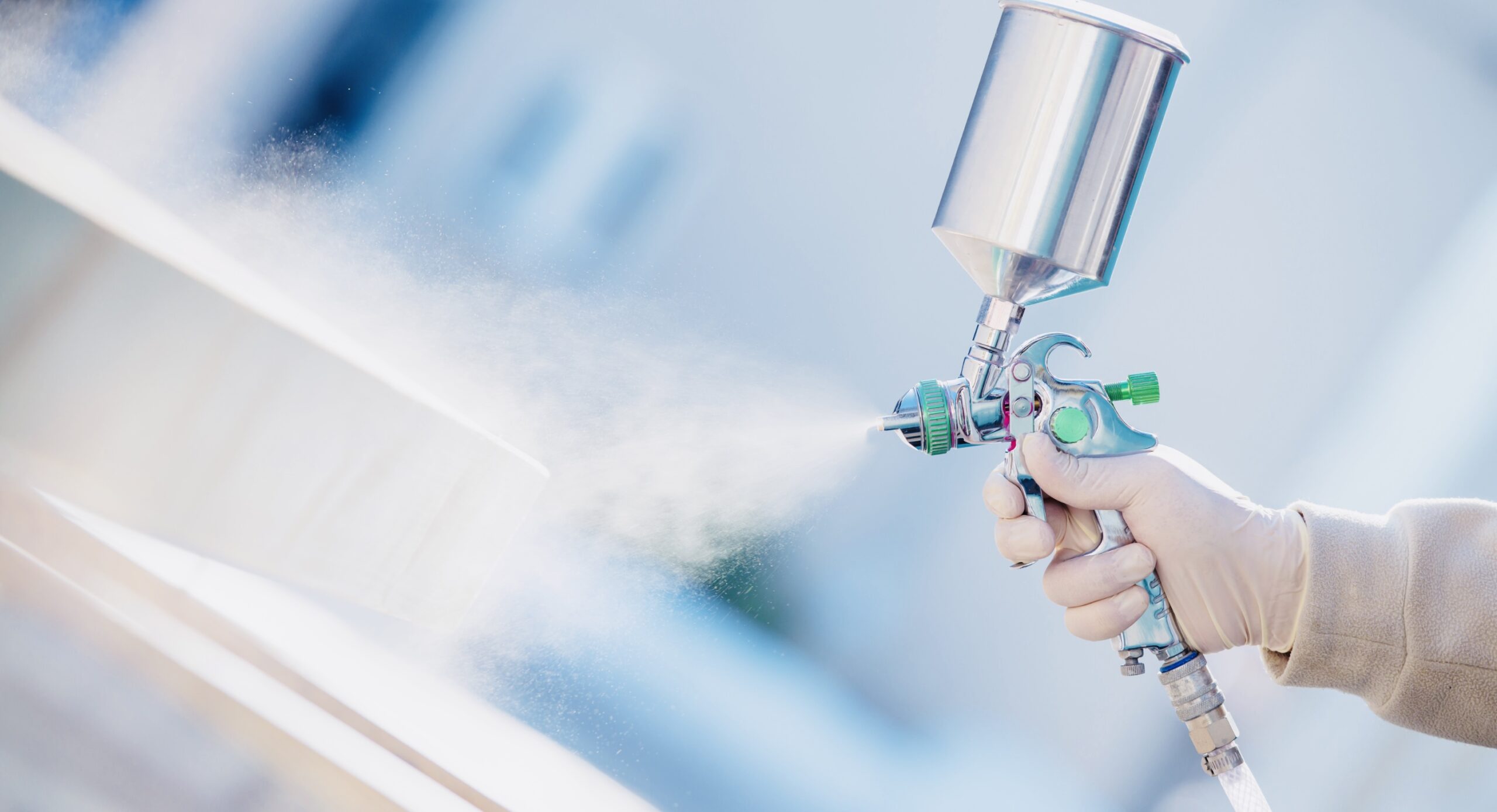How To Thin Urethane Paint For Spraying: Unlocking the Art of Urethane Paint
Close your eyes and imagine this: You’re standing in a bustling automotive workshop or a DIY haven, surrounded by the aroma of creativity and the buzz of projects in progress. Before you stand a classic car, a vintage beauty that has seen better days, waiting for its moment of revival, or perhaps, it’s a piece of industrial machinery showing the wear and tear of years of dedicated service. You’ve decided to breathe new life into these surfaces to restore their allure and protection. The secret weapon in your arsenal? Urethane paint.

Essence Of Urethane Paint
Urethane paint is like a painter’s magic wand, transforming tired and worn surfaces into gleaming works of art. But before the enchantment happens, there’s a tiny but essential step: thinning the urethane paint to perfection. It’s the balance between science and art, a step that can make or break the final result. And today, we’re going to unveil the secrets of this al-chemical process. Join us in the procedure of How To Thin Urethane Paint For Spraying!
What Is Urethane Paint?
Urethane paint, often polyurethane paint, is a versatile and durable coating used in various applications. It’s known for its exceptional resistance to chemicals, weather, and UV rays. This makes it a top choice for automotive, industrial, and artistic endeavors. Its popularity lies in the ability to deliver a high-gloss, long-lasting finish that not only looks stunning but also provides robust protection.
How To Thin Urethane Paint For Spraying: Importance of Proper Thinning
In spray painting, proper thinning is akin to finding the right balance in a symphony. Too thick, and the paint can clog the spray gun or lead to an uneven, textured surface. Too thin, and you risk color runs, an issue where gravity takes over, leaving unsightly streaks and drips on your work. To unlock the full potential of urethane paint, mastering the art of thinning is non-negotiable.
How To Thin Urethane Paint For Spraying: Choosing the Right Thinner
Just as a conductor selects the perfect instruments for a symphony, you must choose the right thinner for your urethane paint. There’s no one-size-fits-all solution; the thinner’s composition must complement the specific urethane paint you’re working with. Acetone, xylene, or even proprietary urethane thinners each has its role. Mixing the wrong thinner can result in a symphony of discordant notes in your finish.
How To Thin Urethane Paint For Spraying: Tools and Safety Precautions
Every painter has their trusted tools, and so should you when it comes to thinning and spraying urethane paint. You’ll need a reliable spray gun, appropriate containers, and safety gear, including gloves, a mask, and eye protection. Also, ensure your workspace is well-ventilated, as the fumes from urethane paint and thinners can be harmful if inhaled.
How To Thin Urethane Paint For Spraying: Step-by-Step Guide to Thinning Urethane Paint
Now, the spotlight is on the step-by-step process of thinning urethane paint. It’s where artistry and science converge:
To begin, ensure you follow the manufacturer’s guidelines on the specific type of urethane paint you’re using. This is your sheet music, your guide to achieving the perfect harmony in your paint mixture.
Measure and Mix: Accurate measurements are paramount. Use a graduated container to measure the paint and the appropriate thinner. This is where science comes into play—finding the right balance for your project.
Gradual Additions: Add the thinner gradually to the paint, not all at once. Mixing as you go helps you achieve a consistent texture.
Stir, Don’t Shake: Avoid vigorous shaking, which can introduce air bubbles. Gently stir the mixture to maintain its integrity.
Viscosity Test: The viscosity of the paint matters. You want it to flow smoothly through your spray gun, akin to the perfect tempo in music. Conduct a viscosity test, adding thinner, if necessary, to reach the ideal consistency.
Filter the Mix: To ensure a pristine finish, use a filter to strain the paint and eliminate any impurities or clumps.
How To Thin Urethane Paint For Spraying: Testing The Consistency
Testing is your rehearsal, your chance to fine-tune the mixture before the grand performance. A simple viscosity cup can help you confirm that the paint flows smoothly and evenly. Think of it as the soundcheck before a concert, ensuring all the instruments are in tune and harmony.
How To Thin Urethane Paint For Spraying: Spraying Urethane Paint
With your mixture in harmony, it’s time to take center stage and start spraying. The art of spray painting is a delicate dance. Begin with a light, even coat, moving in a steady, sweeping motion. Keep the spray gun at the recommended distance from the surface, and maintain a consistent speed. Building up your paint in multiple thin layers, like building up the layers of a musical composition, is the key to achieving a professional finish.
How To Thin Urethane Paint For Spraying: Cleaning Up
The final note of your painting performance is the cleanup. Ensure you clean your tools and equipment thoroughly. Disposal of any leftover materials should be done responsibly and following local regulations.
How To Thin Urethane Paint For Spraying: Common Mistakes and Troubles
Even virtuosos make mistakes, but what sets them apart is their ability to troubleshoot and recover. Common mistakes when spraying urethane paint include uneven coats, paint runs, or improper pressure settings.
Uneven coats: This issue often arises when the paint gun is held inconsistently from the surface or when the painter varies speed. To address this, ensure that the distance between the gun and the surface remains uniform throughout the painting. Practice your technique on a test surface to achieve a consistent, even coat.
Paint runs: Paint runs or sags occur when too much paint is applied in one go. To fix this, wait for the previous coat to dry and lightly sand the affected area. Then, apply a new skin with a lighter touch, ensuring it’s not overly thick.
Pressure settings: Incorrect pressure settings on your spray gun can lead to problems with customization and paint flow. If you notice inconsistencies in your spray pattern, check your equipment’s settings and adjust them accordingly. It’s vital to become familiar with your spray gun’s adjustment features to achieve the best results.
How To Thin Urethane Paint For Spraying: Cleanup and Maintenance
As the final note of your painting performance, you must ensure a clean and well-maintained set of tools and equipment. This aspect is necessary to ensure your future painting projects.
After you’ve completed your masterpiece, here’s how to maintain your equipment:
Clean the Spray Gun: Disassemble the spray gun and clean each component thoroughly. Use an appropriate cleaning solution to remove any paint residue or particles that may clog the gun. Pay extra attention to the nozzle, needle, and air cap.
Flush the Paint System: Run a cleaning solution or solvent through the paint system to ensure no paint residue remains in the hoses, cups, or filters. This prevents any cross-contamination with future paint jobs.
Store Properly: When not used, store your spray gun in a clean, dry place, away from direct sunlight or extreme temperatures. Use protective caps to cover the nozzle and needle to prevent damage or clogs.
Dispose of Waste Responsibly: Any leftover paint, cleaning solvents, or other waste materials should be disposed of following your local regulations. Urethane paint and related chemicals can harm the environment if not managed correctly.
Final Thought: The Masterpiece of Urethane Paint
As the curtain falls on our journey through thinning urethane paint for spraying and mastering the art of automotive or industrial surface rejuvenation, remember that getting this art takes practice and patience. Like learning a musical instrument or conducting a flawless symphony, you’ll refine your skills with every project. Armed with the knowledge of How To Thin urethane Paint For Spraying and about the correct thinner, the perfect mixing technique, and the expertise in spraying, you’re ready to turn ageing automobiles into showpieces or revitalized industrial equipment into works of art. The stage is set, the audience awaits, and the spotlight is on you, the artist with the power to transform surfaces with the magic of urethane paint. Embrace the journey, paint your world with brilliance, and let the artistry of urethane paint truly shine.

